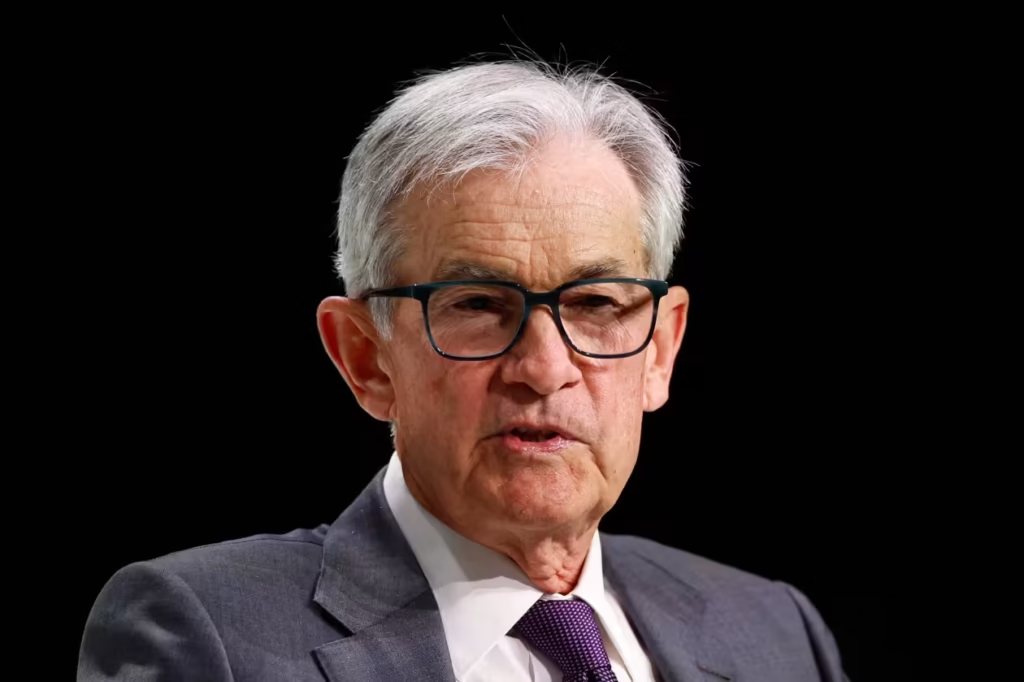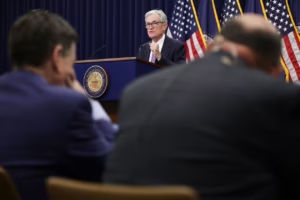While cautioning about increased economic forecast uncertainty and increased risks of inflation and unemployment in the new high-tariff U.S. economy, the Federal Reserve maintained its interest rate holding pattern on Wednesday.
Fed officials noted in a statement that forecast uncertainty “has increased further,” and that “the risks of higher unemployment and higher inflation have risen.”
The Fed statement had no dissenting opinions.
Due to consumer spending cuts, the U.S. GDP shrank in the first quarter. The gross domestic product shrank as a result of businesses scurrying to purchase items from overseas before prices rose as expected. The labor market has so far survived the storm, but investors, companies, and consumers are deeply uneasy about trade policy.
Also read: Powell believes Trump tariffs could postpone rate decreases and inflation progress by a year.
Although “swings in net exports have affected the data,” Fed policymakers said in the statement that economic activity “has continued to expand at a solid pace.”
Whether the economy is robust enough to adapt to the higher tariffs on products imported into the United States is the central bank’s main concern, according to economists.
Fed Chair Jerome Powell emphasized uncertainty during his news conference and stated that interest rates were appropriate given the circumstances. “There is just so much we don’t know,” Powell stated. Also, he said, the Fed did not have to be “in a hurry.”
He came to the conclusion that it was simply unclear how interest-rate policy should react.
The likelihood of a recession is at its highest level since the Fed began raising interest rates in the fall of 2022.
The Fed has now held interest rates steady for three consecutive meetings with Wednesday’s decision.
This year, the central bank plans to decrease interest rates twice. Before lowering interest rates, officials have stated that they want to make sure tariffs don’t result in a persistent rise in inflation.
Powell stated that with every week and month that passes, the central bank will gain a better understanding of where tariffs would fall. Powell stated that there is currently “so much uncertainty about the scale, the scope and the persistence” of the levies.
When President Donald Trump announced sweeping duties on nations worldwide in the Rose Garden on April 2, it shocked international markets. He continued by announcing that the “liberation day” tariffs will be suspended for 90 days for the majority of nations.
There has been conjecture that Trump may attempt to dismiss Powell because of his frequent calls for the Fed to cut interest rates. While hurling insults at the Fed chief, the president recently stated that he would not attempt to fire him.
“Very neat work for an outfit trying to avoid touching the third rail of Trumpian politics,” Chris Low, chief economist at FHN Financial, wrote in a note about the Fed’s comments on Wednesday. “Note how the Fed managed to dismiss a downward lurch in growth caused by surging imports in anticipation of tariffs without mentioning either imports or tariffs.”
In a speech last month, Powell stated that Trump’s tariffs were far higher than anticipated and that as a result, their consequences on the economy—such as increased inflation and slower growth—would also be greater.
The chief economist at BNP Paribas, James Egelhof, believes the Fed will stay on hold until the end of the year, weighing the trade-off between a soft patch of GDP from the tariff adjustment and rising inflation from the tariffs.
“Absent a decisive turn in the data, the FOMC seems quite comfortable remaining on hold indefinitely,” he stated.
In an interview, he stated, “Powell would have cut already if it were clear that the next move would be a cut.”
According to Jefferies senior U.S. economist Tom Simons, the economy will “grind to stall speed” in the second half of this year and into 2026, but it will not enter a recession.
In the final three meetings of the year, beginning in September, he stated that he anticipates two quarter-point rate cuts. According to him in an interview, that will bring prices closer to the “neutral” level, which neither increases nor decreases demand.
“Neutral feels like the place they should be if we’re not in recession, but we’re dealing with higher price levels from tariffs,” Simons stated.





